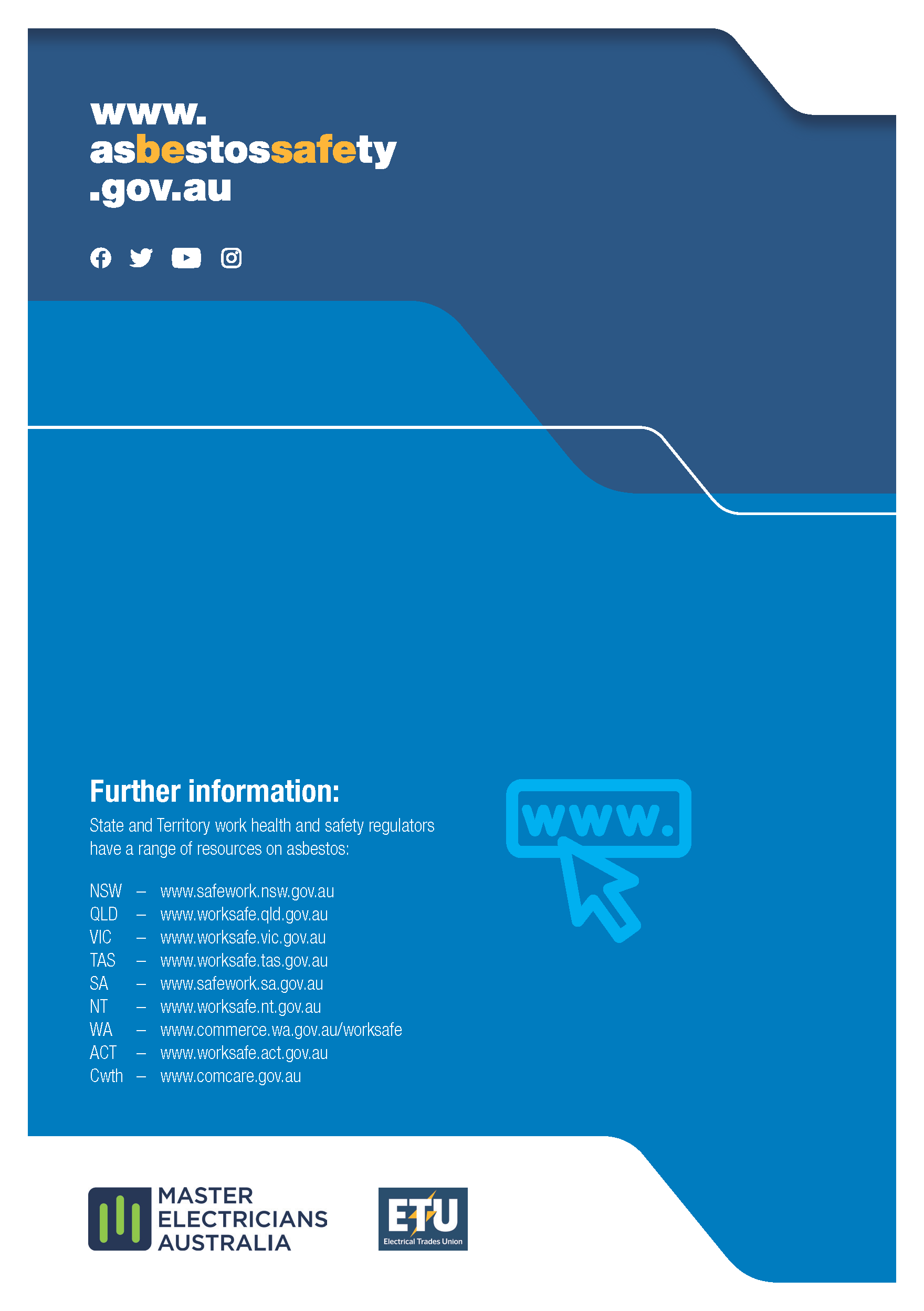Asbestos is one of the most hazardous materials present in buildings throughout Australia. It lurks in many materials that electricians work with and can be found in over 3000 products. Are you confident you know how to deal with asbestos?
Think you can tell what it is just by looking?
Wrong. The only way to be sure is to have a sample tested by a NATA (National Association of Testing Authorities) accredited laboratory. Ask an asbestos professional such as an occupational hygienist, licensed asbestos assessor/removalist or individual who has undertaken a recognised training course in asbestos identification for advice and to have a sample tested.
If the building is a workplace (commercial and public buildings) the person with management or control of the workplace must keep an asbestos register that tells you where it is and what condition it is in. If it’s a home, then ask the homeowner if there is any asbestos present.
If asbestos is likely to be disturbed as part of demolition or refurbishment, then it must be safely removed before the work starts. In most circumstances, WHS laws require asbestos to be removed from workplaces by a licensed asbestos removalist.
You must comply with all the requirements of the work health and safety laws and environment protection laws in your state or territory. These laws can vary, so it is important that you check requirements in your jurisdiction.If you are not trained in the safe handling of asbestos – don’t touch it!
What is a safe level of exposure to Asbestos?
There is NO known safe level of exposure to asbestos.
You don’t need a lot of exposure to asbestos fibres to develop a fatal disease later in life. The people at greatest risk of exposure are those that undertake repairs, maintenance, renovations and other work on older buildings and infrastructure which contain asbestos materials.
Inhaling asbestos fibres is associated with fatal diseases including asbestosis, lung cancer and mesothelioma. All these asbestos-related diseases contribute to approximately 4000 deaths in Australia each year.
If you believe you have been exposed to asbestos fibres you should take the following steps.If the suspected exposure took place in the workplace:
- contact your employer, who should take immediate action to remove the ongoing risk; or your state or territory work health and safety regulator if that does not occur.
If the suspected exposure took place outside the workplace (home or community):
- contact your local council or environment regulator for advice on how to ensure the asbestos fibres pose no ongoing risk to yourself or to others.
You could also arrange an appointment with your GP to discuss the associated health risks and request advice regarding any health assessments that your GP considers appropriate.
It is also recommended that you register your details on the National Asbestos Exposure Register (NAER)
What is the ETU doing to combat asbestos products?
Recently the ETU successfully campaigned for the Australian Border Force (ABF) to take action against illegal imports of asbestos in building-related materials.
Data published by the Asbestos Safety and Eradication Agency revealed many asbestos-containing building materials were still making it into the country, but that building materials simply weren’t being tested. This is despite new asbestos having been found throughout the electrical and construction industries in recent years.
The ETU put pressure on the ABF resulting in a subsequent testing blitz on building materials being imported and major crackdown on any asbestos containing products trying to get into the country. We’re still waiting for the results of this blitz but undoubtedly it is a clear message to importers.
Resources
This guide provides information about where you might find asbestos, the laws that relate to asbestos management and removal and how to protect yourself and others from exposure to harmful asbestos fibres.
Print it out for others to read at your workplace or share it around with your workmates. It could save their life one day.
